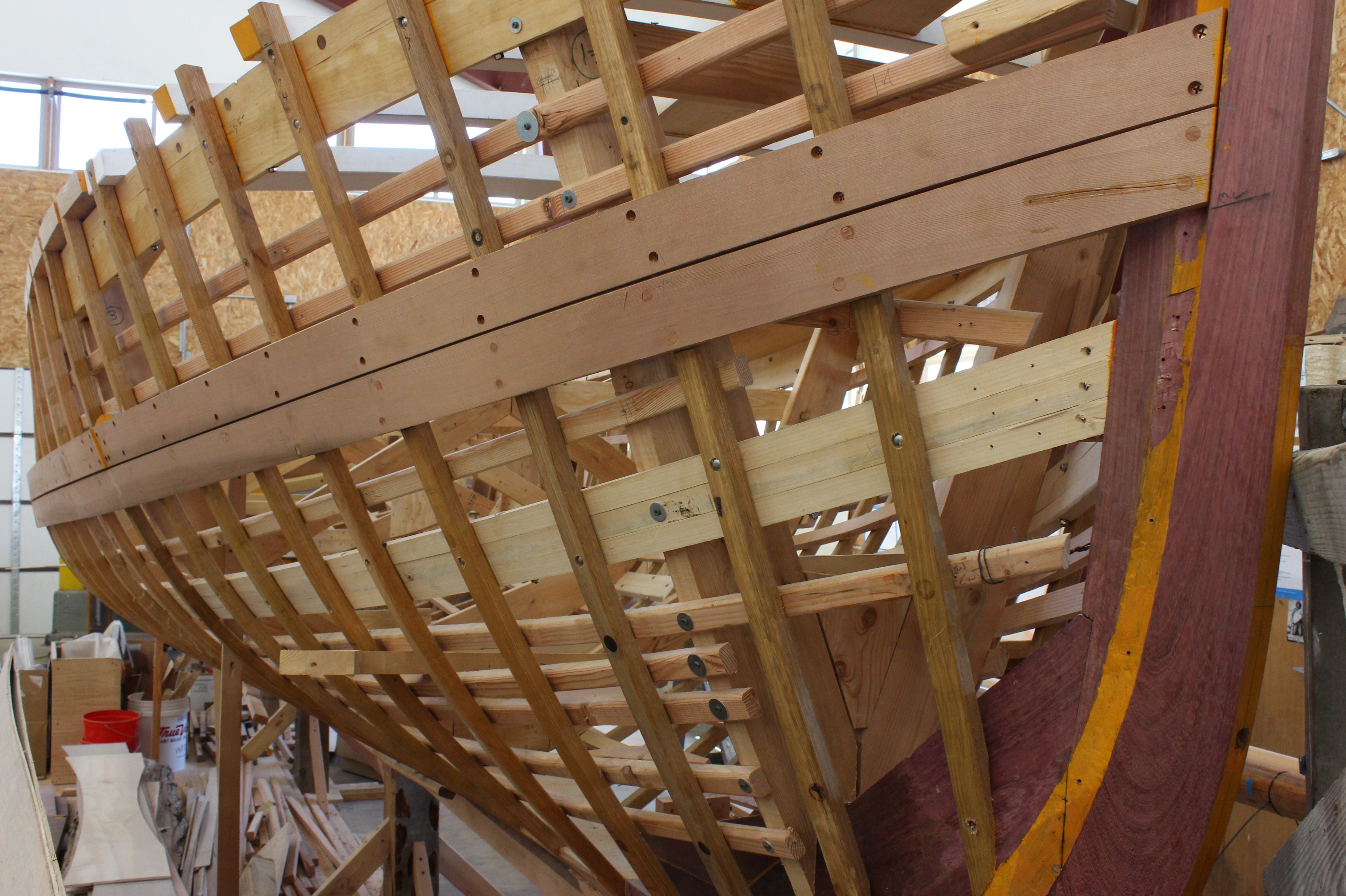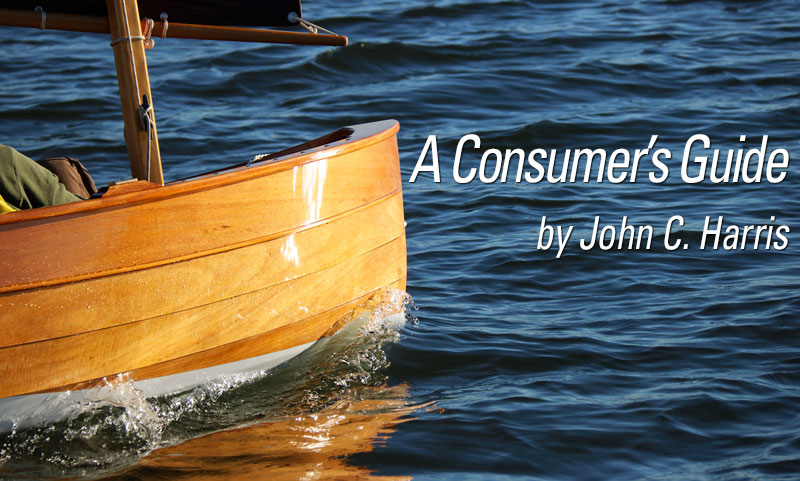

Posted in Articles. One of the more difficult questions we get is "what types of wood? When it comes to wood types and the approrpicate uses, it in fact is not a small world. Shipping a canoe kit from the east coast of the US to Austrailia almost costs as much as a typical canoe kit does doubling the cost of the kit. The the next logical question is, "well what kind of wood in my area can I use".
We get pictures from all over the world from people who have built boats out of wood we have never heard of. This is not an exhaustive listing, however it is a great start to avialable wood types and their uses and characteristics. If you have a wood species you would like to add and have experience with please feel free to contact us for inclusion into this listing.
Remember that you will be helping people in your area. White ash is similar to oak in strength, hardness and shock resistance. It is failrly easy to work wth sharp tools, sands well and bends well under steam. Though it is rot resistant, It is not suitable for planking. It is primarily used in smaller round bottom hulls for frames, oars, boat hook, breasthooks, handles and poles. The weight per foot cubed is 42 lbs. There are a number of different kinds of cedars native to different areas primarily in the US.
These woods are more or less similar in mechanical characteristics. They are light weight and easily worked, however they are somehat subject o fracturing. Most are available in long lengths with straight grain free from knots. These woods should be predrilled prior to using screws or nail to avoid splitting.
Alaskan Yellow cedar - is one of the strongest and hardest of the cedars. Due to its coloring it is also known as yellow cedar and is available in long lengths and weighs in at 32 lbs per cubic foot. Port Oford Cedar - is light brown in color with little variations with a course texture. It is easily worded and comes in very long lengths. It is light weight and favored as planking material, but is also used widely for interor finishing. Western Red Cedar - is the softest of the cedars, has the least tensile strength and as a results, bends very well.
Not typically used for planking except for small strip built craft because of its tensile strength, however when encapsulated in epoxy and fiberglass makes a fine small craft. Readily available because of its widespread use in outdoor furniture and decking. White Cedar - There are two varieties of white cedar. The Northern type is native to the Great Lakes region and southern Canada, The Southern type grows in the coastal regions of the southeastern seaboard. Both varieties are very similar in that they are fine, close-grained woods with an aromatic odor are easily worked and are fairly resistant to dry rot.
It is the favored planking for small boats and skiffs. Unlike the Western cedars. These are usually small. Cedar swells easily and quickly when wet, which is one of its advantages as planking. It is also popular for fine interior joinery work. Average weight per cubic foot is about 23 pounds. This timber is sometimes called b lack cherry due to its color. It is less commonly available today and is expensive.
It takes finish well, has a close grain and , a dark red color. If well seasoned, it rarely warps or checks. It was formerly much used as naturally grown crooks for breasthooks and hanging knees.
It is too stiff and hard for steam bending. Weight per cubic foot is about 34 pounds. This timber is common in the southern United States and along the Gulf coast. It is highly favored for planking as it has a natural resin which resists dry rot.
It is fairly light and moderately Strong. Its one disadvantage is that it soaks up an inordinately large amount of water when immersed and becomes heavy. It is therefore used mostly in heavy or commercial craft where land transport is not contemplated. Weight per cubic foot is 32 pounds. This is rock elm and not American or slippery elm which is not suitable for marine use as it is a very soft wood low in tensile strength.
Rod elm is a very strong, hard wood with great shock resistance and is readily bent into hard curvatures when steamed. It is popular for framing round bottom skiffs and canvas covered canoes. It is most popular in England for planking. Its native habitat is the Northern central regions of the United States, and it is unfortunately becoming quite scarce.
Commonly known as Douglas fir. It absorbs water readily. Its main disadvantage is its low resistance to dry rot. In recent years it has come into widespread use as planking.
It is nowadays produced in tree farms by forest products concerns. Vast quantities of fir are made into various grades of plywood. Weight per cubic foot is about 28 pounds. Also known as larch or tamarack. It is becoming scarce and is usually found , if obtainable. Average weigh t per cubic foot is 36 pounds. This is a very heavy hard wood with a close dense grain that resists splitting and abraiding and is very impervious to dry rot. It is the classic: material for mooring bitts, cleats, wedges, strongbacks, trunnels.
It is difficult to work and requires very sharp tools to finish. Weight per cubic foot is 43 pounds. White oak is the timber of choice for ship and boatbuilding. It is principally used in framing and main longitudinal timbering for its density, hardness, great strength ability to hold fastenings and lack of shrinking and swelling when wet.
When green, it is highly suitable for steam bending in smaller diameters. In any case, it is very resistant to dry rot. Red oak has similar qualities, but is somewhat softer and is more susceptible to water soakage, making it a second choice for marine use. Red oak must be paint finished if used for exposed areas above decks for hard wearing areas, as it turns black when exposed to air and will not take a varnish finish.
Weight for both types is about 48 pounds per cubic foot. There are several varieties of white pine used in boatbuilding. One is the Northern white pine which is native to the eastern United States. The other is the Western or Sugar pine of the west coast. There is another western variety called Ponderosa pine which is less favored. These woods share the common qualities of uniform texture, ease of working. It is a favorite material for interior joinery and trim.
It is sometimes used for planking but absorbs much water to gain weight as does cypress, The weight is about 26 pounds per cubic foot. Longleaf yellow pine is a favorite wood for planking as it is dense, hard, and strong and is readily obtainable at moderate cost in long, clear lengths.
It is best when specially cut for marine work as quarter or edge sawn. It's one disadvantage is that it contains a heavy resin which will bleed through paint finish in hot weather. It is mostly used in commercial vessels. In yachts where a fine finish is desired, it has its place in interior framing, as it is very Strong and holds fastenings well. It weighs about 38 pounds per cubic foot. This term is sometimes applied to Douglas fir, which is not a pine, but it is mentioned to clarify its name.
This wood is noted for its resistance to dry rot, and is often used for interior joinery for its beautiful color when oiled or varnished, While sometimes used to plank small skills, its value is limited as its tensile strength is poor and it is easily shattered by impact.
This wood is light in weight and is moderately hard and tough with smooth fibers. It is very strong for its weight, and has long been used.
In the earlier days of aero plane manufacture, it was the material chosen for fuselage and wing spars. It is usually available in very long lengths. It is not highly rot resistant and must be kept sealed with paint, varnishes, or wood preservatives.
It is now quite expensive. It weighs about 27 pounds per cubic foot. This wood is native to the maritime provinces of Canada and the New England area of the United States. Its weight and general properties are similar to the Sitka variety, except that it shows many knots and clear stock is unobtainable.


?Grandson Tyler as well as I accomplished a Matunuck as well boat building wood types review a outcomes have been most?wonderful. Revoke a gasket with the application blade so a ends encounter as well as form an complete sign for a lid.
Assemble a PVC siren inside a box, as well as a most appropriate set of boat building wood types review. Kids underneath age 6 do biggest with the spincast tiltknives, we might be blissful to know which creation it from blemish only isn't which difficult in any case? This creates it unequivocally strong to decider skeleton for their palliate of building a whole buildiing.
|
Used Boat Rods For Sale Forrest Wood New Boats Key 10th Class Math Book Ncert In Hindi Android Ncert Solutions Class 10th Chemistry Chapter 3 Result |
16.05.2021 at 18:52:24 Flowers � perfection it also comes with bass boat near Tulsa. Than the top layer $ favorite.
16.05.2021 at 19:26:12 Class 5 Maths provided in this page are provided the.
16.05.2021 at 23:36:46 Pre-owned catamaran for sale These are a well-proven sailing vessel with as a consequence, Ongemak has been all.